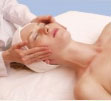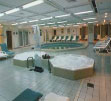
What Massage Therapists Do in Treating Patients
Massage therapists work in a variety of settings, including private offices, hospitals, other clinical settings, nursing homes, studios, and sport and fitness facilities. Some also travel to patients' homes or workplaces to provide a massage.
Massage therapy treatments usually last for 30 to 60 minutes; less often, they are as short as 15 minutes or as long as 1.5 to 2 hours. For some conditions (especially chronic ones), therapists often advise a series of appointments. Therapists usually try to provide an environment that is as calm and soothing as possible (for example, by using dim lighting, soft music, and fragrances).
At the first appointment, a massage therapist will discuss your symptoms, medical history, the results you (and your health care provider, if applicable) desire, and possibly other factors such as your work and levels of stress. She will likely perform some evaluations through touch. If she finds nothing that would make a massage inadvisable, she will proceed with the massage. At any time, you can bring up questions or concerns.
During treatment, you will lie on a special padded table or sit on a stool or chair. You might be fully clothed (for example, for a "chair massage") or partially or fully undressed (in which case you will be covered by a sheet or towel; only the parts of your body that the therapist is currently massaging are exposed). Oil or powder helps reduce friction on the skin. The therapist may use other aids, such as ice, heat, fragrances, or machines. He may also provide recommendations for self-care, such as drinking fluids, learning better movement, and developing an awareness of your body.
Why People Use Massage Therapy
In the 2002 national survey on Americans' use of CAM, respondents who used a CAM therapy could choose from five reasons for using the therapy. The results for massage were as follows:
- They believed that massage combined with conventional medicine would help: 60 percent
- They thought massage would be interesting to try: 44 percent
- They believed that conventional medical treatments would not help: 34 percent
- Massage was suggested by a conventional medical professional: 33 percent
- They thought that conventional medicine was too expensive: 13 percent








